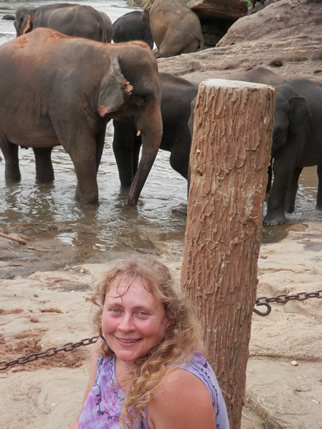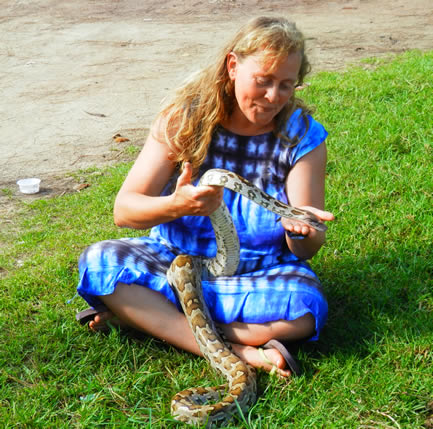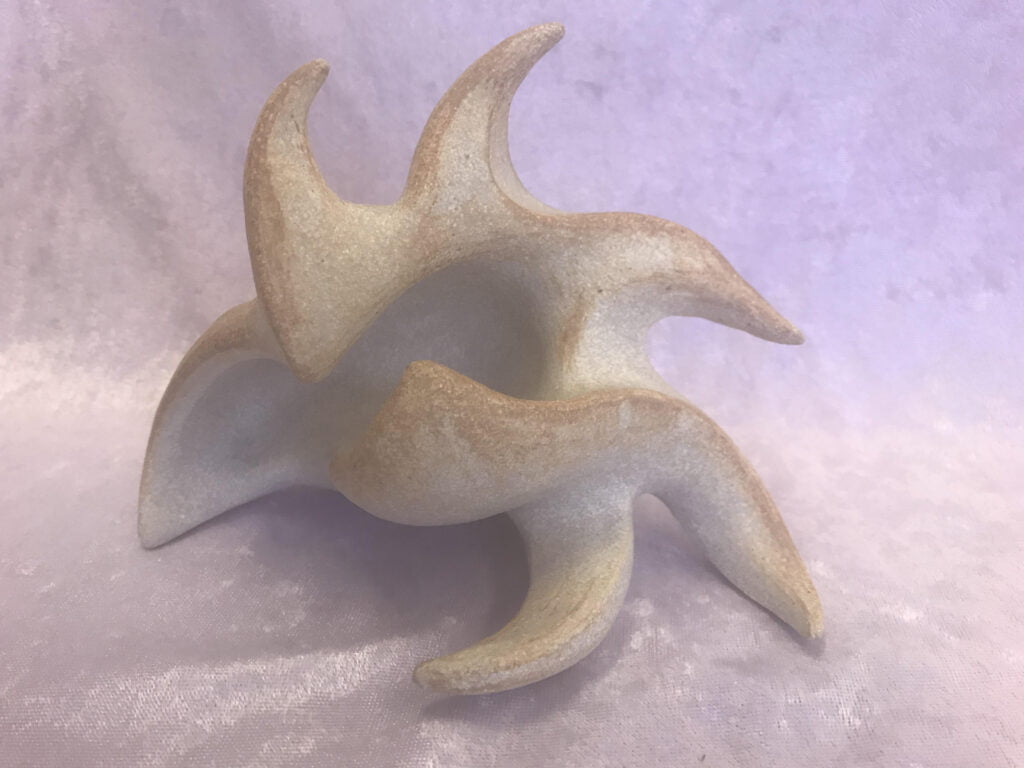

I have always loved the natural world, and I endeavour to communicate this joy to others while exploring my own vision of nature. Most of my work involves painting out of doors, where I enjoy expressing the dancing swirls and rhythms in nature, and the movement of changing light and fluttering leaves. I absorb the feel and spirit of the landscape, channelling my perceptions in the movement of my hand and touch of the brush with colour.

Before painting, I spend about 20 minutes making a preparatory sketch, to help me decide upon the composition & free up the flow of my energy. I prefer to work from life rather than photos.

My degree was in zoology, which, although a science, was also very much connected with my love of nature. I still take a great interest in the subject, & find that an understanding of evolutionary theory enhances my appreciation of the natural world.

I have, among other sources of inspiration, followed the teaching of Cecil Collins as interpreted by a number of his former students. This emphasises the spiritual dimension of art, and sees creativity as an expression of an inner life which can be reached through discarding habits and clichés of expression acquired perhaps through more traditional training.

However, my biggest inspiration is the great artist of nature, whose work is infinitely superior to any work that humans can produce. For me it is not about capturing nature; that implies a grasping and wanting to possess a subject, and has an acquisitive quality to it. Whereas, for me, it’s about responding to what is there and allowing it to resonate in my heart, and finding a way to express that joy.
My Sculptures
Whether it be snorkelling over coral reefs, jumping about in waves, sailing or picking up shells from the strandline… I have a great passion for the sea! I feel that this source of inspiration is channelled into my sculpture, so that the forms which emerge are redolent of moving water & the living microcosms of that energy which have evolved as sea plants & animals, especially the shells of molluscs.
When I begin an abstract sculpture I have little idea what the final form will be. I have only a vague imperative as to whether to proceed mostly by carving into a large lump of the clay or by sticking smaller pieces together. Sometimes I start by looking at a previous sculpture, but the new one rarely ends up looking anything like it. When I was sculpting previously – my fired ones were made 1994 – 2008 – I more often had an animal or human form in mind. I may come back to this in the future; who knows…
First I work with my fingers, sweeping the clay into rough forms, adding & gouging where intuition tells me. To begin with, the clay is too soft to support large hollows, & extremities are vulnerable to being squashed, so there is some cerebral planning involved in orchestrating the order in which it takes shape as the clay becomes firmer. As it progresses, over many sessions, the form gradually crystallizes, & I find myself adding & removing ever-smaller portions of the clay.
I fine-tune the contours with various tools such as metal balls of various sizes on rods, wax-working tools & my favourite tool of all; an old teaspoon. Most of my finished sculptures are very smooth, although T-Material, my favourite clay to work with, becomes rougher when fired due to the grog (finely ground fired clay) surfacing. This creates an effect a bit like carved stone, which I like.
It is not a good idea to have any part of the sculpture much thicker than an inch, as this would increase the chance of it exploding in the kiln. The writing of a poem may be constrained by the discipline of rhythm & rhyming of words, which itself can generate ideas. In the same way, this thickness restriction actually enhances my creativity, forcing me to make hollows where I wouldn’t otherwise have thought to do so, leading me to discover new possibilities.
The forms which emerge from this process rarely have a flat base, & can often be displayed different ways up – I envisage them sitting on transparent Perspex blocks so that they can be viewed from all directions. They are as much to enjoy by holding & feeling them as to appreciate visually, & I would love them to be enjoyed by blind people.